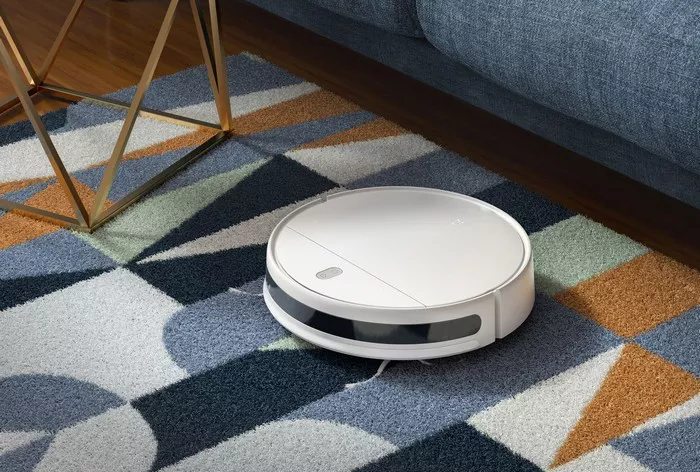Maintaining a clean home is crucial for a healthy and comfortable living environment. A well-functioning vacuum cleaner plays a pivotal role in this endeavor, efficiently removing dust, dirt, and debris from carpets, floors, and upholstery. However, encountering issues with your vacuum cleaner can be frustrating, particularly when it fails to perform as expected. Fortunately, many common problems can be diagnosed and resolved with some troubleshooting. In this comprehensive guide, we’ll explore the signs indicating that your vacuum isn’t working properly, along with troubleshooting steps and preventive maintenance tips to ensure optimal cleaning performance.
Signs Your Vacuum Isn’t Working Properly
Loss of Suction Power
One of the most noticeable signs that your vacuum isn’t operating as it should is a reduction in suction power. This issue can arise due to various factors, including clogged filters, hose or brush roll blockages, or a worn-out motor. Addressing the specific cause of reduced suction is essential for restoring your vacuum’s cleaning efficiency.
Strange Noises
Unusual sounds emanating from your vacuum during operation are indicative of underlying problems. Whether it’s a grinding, rattling, or squealing noise, mechanical issues such as problems with the brush roll, belt, or motor could be to blame. Promptly addressing these noises can prevent further damage and ensure the longevity of your vacuum cleaner.
Inadequate Brush Roll Performance
The brush roll plays a crucial role in agitating dirt and debris embedded in carpets and upholstery, facilitating their removal by the vacuum’s suction. If you notice that the brush roll isn’t performing effectively, it could be due to factors such as a worn-out brush roll, tangled bristles, or debris accumulation. Regular maintenance is key to restoring optimal brush roll performance and ensuring thorough cleaning.
Overheating
Excessive heat generated by your vacuum is a red flag that shouldn’t be ignored. Overheating can occur due to blocked airflow or motor issues, potentially leading to damage if left unaddressed. Taking steps to prevent overheating is essential for preserving your vacuum’s functionality and prolonging its lifespan.
Troubleshooting Steps
Check Power Settings
Before delving into more complex troubleshooting, ensure that your vacuum is set to the appropriate power setting for the surface being cleaned. Adjusting the settings according to the type of flooring can significantly impact cleaning performance.
Empty or Replace the Bag/Canister
A full bag or canister can impede airflow, resulting in reduced suction power. Regularly emptying or replacing the bag/canister as needed is essential for maintaining optimal cleaning efficiency.
Clean or Replace Filters
Clogged filters hinder airflow and can contribute to loss of suction. Depending on the type of vacuum cleaner you have, there may be different filter types requiring various cleaning methods. Refer to the manufacturer’s instructions for guidance on proper filter maintenance.
Inspect the Hose and Connections
Inspect the vacuum hose and connections for cracks, leaks, or loose fittings that could compromise suction power. Addressing any issues with the hose and connections is crucial for ensuring efficient operation.
Assess the Belt Condition
The condition of the vacuum’s belt directly impacts the performance of the brush roll. Worn or damaged belts can lead to inadequate brush roll rotation, affecting the overall cleaning effectiveness. Regularly inspecting and replacing worn-out belts is essential for maintaining optimal brush roll performance.
Remove Blockages
Check the hose, brush roll, and attachments for any obstructions or debris that could impede airflow. Clearing blockages will help restore suction power and improve cleaning performance.
Preventive Maintenance Tips
Regular Cleaning
Implementing a routine cleaning schedule for your vacuum cleaner is key to ensuring optimal performance. Empty the canister or replace the bag frequently to prevent airflow obstruction. Additionally, clean filters as recommended by the manufacturer to maintain efficient operation.
Brush Roll Maintenance
Regularly inspect the brush roll for tangled hair, string, or other debris that may hinder its effectiveness. Remove any obstructions and replace worn-out brush rolls to ensure thorough cleaning.
Inspect and Lubricate Moving Parts
Periodically inspecting and lubricating the vacuum’s moving parts can prevent premature wear and ensure smooth operation. Pay particular attention to components such as bearings and hinges to prolong their lifespan.
Professional Servicing
If troubleshooting steps fail to resolve the issue, consider seeking professional repair services. Experienced technicians can diagnose and address more complex problems, ensuring your vacuum cleaner is restored to optimal working condition.
Conclusion
A well-maintained vacuum cleaner is essential for maintaining a clean and healthy home environment. By recognizing the signs indicating that your vacuum isn’t working properly and following the troubleshooting steps and preventive maintenance tips outlined in this guide, you can ensure optimal cleaning performance and prolong the lifespan of your vacuum cleaner. Don’t let minor issues escalate into major problems—take proactive measures to keep your vacuum in top condition and enjoy hassle-free cleaning for years to come.

